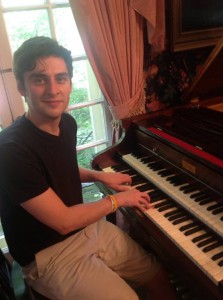Reviving the modern harpsichord
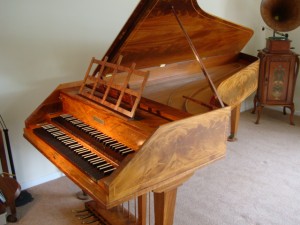 Harpsichordist Christopher Lewis is working on a PhD as part of our ‘Making of the Modern Harpsichord’ project in collaboration with the National Trust. Here he tells us about the newest addition to our keyboard room – a magnificent revival instrument by John Feldberg – and how it fits into his research:
Harpsichordist Christopher Lewis is working on a PhD as part of our ‘Making of the Modern Harpsichord’ project in collaboration with the National Trust. Here he tells us about the newest addition to our keyboard room – a magnificent revival instrument by John Feldberg – and how it fits into his research:
As the Early Music world continues to grow and move from strength to strength, what has especially pleased me is the growing resurgence of interest in the pioneers of the field. This also includes a growing enjoyment of the modern types of harpsichord that were so popular at origins of the early music revival. When the harpsichord virtually disappeared from the world sometime in the late 18th century, it was ‘superseded’ by the fortepiano and eventually the piano. When it did reappear it wasn’t until much later, at the start of the 20th century. When the harpsichord returned, for various reasons, it was decided that it needed to be improved and updated and instruments were built that varied widely from the instrument that Bach would have known and loved. Using modern materials, harpsichords with steel frames, leather plectra and complicated pedal mechanisms appeared on the market.

Notable harpsichordist Wanda Landowska especially relished these instruments, and the Pleyel harpsichord became her instrument of choice. For decades these instruments were largely the only kind available and as such inspired composers such as Ligeti, Poulenc, Martinů and Stravinsky to write music for them. Ironically as time went by and fashions changed these modern instruments became dinosaurs themselves, relegated to church basements and even firewood! What did happen though was the huge rise of copies of historical harpsichords (often with slight modern changes).
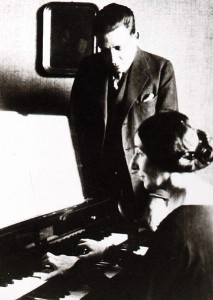
The problem was that so much of the modern music composed had been inspired by the modern harpsichord and simply didn’t work as well on a historic copy. For this reason I’m very glad that slowly and surely the modern harpsichord has returned a little, and is perhaps looked on a little more kindly that it was in say the 1980’s. For many people the sound of the modern harpsichord is something they grew up with and as such remembered very fondly.
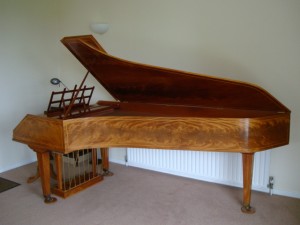
The University of Southampton has now received a very generous gift from two donors who have given us a wonderful John Feldberg harpsichord from the 1970’s, which has all the whistles and bells one would expect from a modern harpsichord. A generous five sets of strings allow for a much more varied colour to be produced from the instrument than many others could. The presence of the rich, deep 16′ set of strings, that Pleyel made so famous, is also found on this Feldberg. 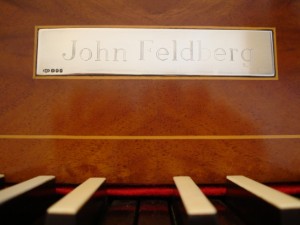
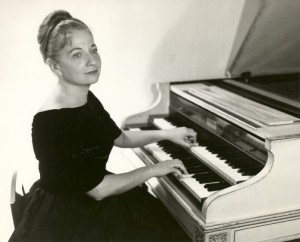
Aside from being a very suitable instrument for modern music, even playing early music on an instrument like this takes us whirling back to the ‘Golden Age’ of the harpsichord revival, and reminds us of the work that harpsichordists such as Wanda Landowska, Rafael Puyana and Sylvia Marlowe did. I’m very happy that the University of Southampton has instrument like this, for my PhD project on the Making of the Modern Harpsichord. It is extremely useful to have a really fine instrument like this to use and demonstrate the music of this period, and to illustrate why music of this period works so well on a big, heavy piano-like modern harpsichord vs the more usual style of instrument.
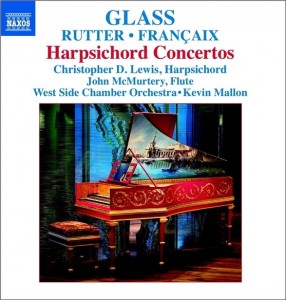 When I graduated from the Conservatory of Music in San Francisco I released a CD, ‘Harpsichord Concertos’ with Naxos, with music by Philip Glass, John Rutter and Jean Françaix. For this recording, the possibility of using a modern instrument was strongly considered, but due to difficulties in securing an instrument of this type in New York City where we recorded, I opted for a historic copy. This worked very well, but I’m pleased to say I just returned from another recording trip, a solo recording this time, in California, where I completed an all French music CD on a newly refurbished Pleyel from 1939 (which was used in Concert by both Wanda Landowska, and believe it or not, Glen Gould!). I have secured funding for two further CD’s which will both also be likely solo Pleyel albums. I strive to continue ensuring they have a place in the concert hall and in the modern recording industry. Without these instruments and pioneers, I’m sure the early music world wouldn’t have taken off at the speed and style that it has done.
When I graduated from the Conservatory of Music in San Francisco I released a CD, ‘Harpsichord Concertos’ with Naxos, with music by Philip Glass, John Rutter and Jean Françaix. For this recording, the possibility of using a modern instrument was strongly considered, but due to difficulties in securing an instrument of this type in New York City where we recorded, I opted for a historic copy. This worked very well, but I’m pleased to say I just returned from another recording trip, a solo recording this time, in California, where I completed an all French music CD on a newly refurbished Pleyel from 1939 (which was used in Concert by both Wanda Landowska, and believe it or not, Glen Gould!). I have secured funding for two further CD’s which will both also be likely solo Pleyel albums. I strive to continue ensuring they have a place in the concert hall and in the modern recording industry. Without these instruments and pioneers, I’m sure the early music world wouldn’t have taken off at the speed and style that it has done.
See Chris’s personal website for more on his projects and the modern revival harpsichord.
